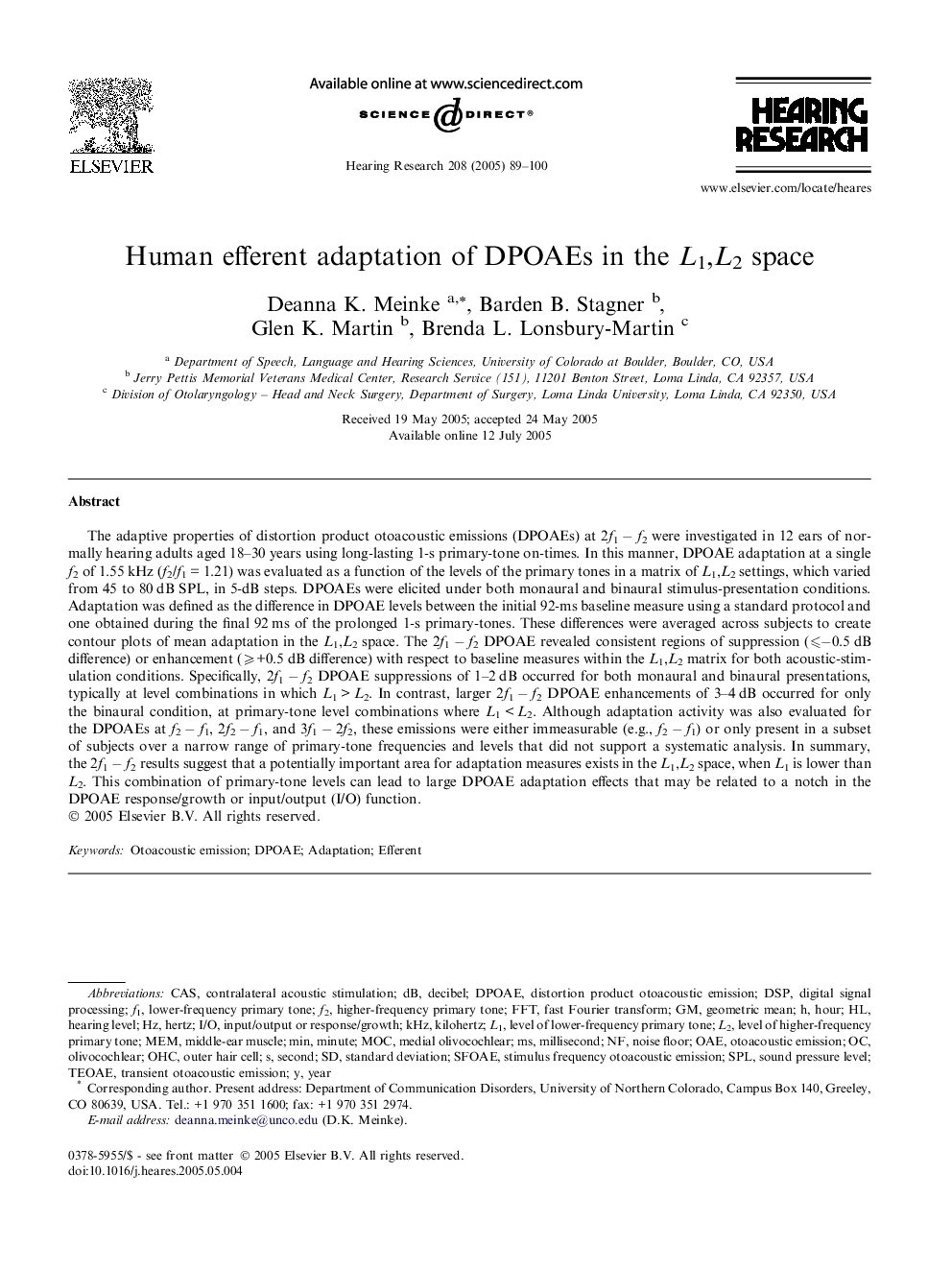| کد مقاله | کد نشریه | سال انتشار | مقاله انگلیسی | نسخه تمام متن |
|---|---|---|---|---|
| 9436551 | 1615690 | 2005 | 12 صفحه PDF | دانلود رایگان |
عنوان انگلیسی مقاله ISI
Human efferent adaptation of DPOAEs in the L1,L2 space
دانلود مقاله + سفارش ترجمه
دانلود مقاله ISI انگلیسی
رایگان برای ایرانیان
کلمات کلیدی
SFOAEMOCKilohertzDSPCASFFTTEOAEOHColivocochlearSPLDPOAEMiddle-ear muscleOAE - CESI/O - I / Omedial olivocochlear - mediv olivocochlearEfferent - اثیریOtoacoustic emission - انتشار Otoacousticdistortion product otoacoustic emission - انتشار محصولات octo آکوستیک محصول اعوجاجstandard deviation - انحراف معیارFast Fourier transform - تبدیل سریع فوریهContralateral acoustic stimulation - تحریک آکوستیک متعاقب جانبیMin - حداقلdecibel - دسیبلminute - دقیقهSecond - دومینAdaptation - سازگاری(زیست شناسی)Hour - ساعتyear - سالhearing level - سطح شنواییSound pressure level - سطح فشار صوتouter hair cell - سلول بیرونی موMEM - مامانGeometric mean - میانگین هندسیmillisecond - میلی ثانیهHertz - هرتزDigital signal processing - پردازش سیگنال دیجیتالNoise floor - کف سر و صداkHz - کیلوهرتز
موضوعات مرتبط
علوم زیستی و بیوفناوری
علم عصب شناسی
سیستم های حسی
پیش نمایش صفحه اول مقاله

چکیده انگلیسی
The adaptive properties of distortion product otoacoustic emissions (DPOAEs) at 2f1 â f2 were investigated in 12 ears of normally hearing adults aged 18-30 years using long-lasting 1-s primary-tone on-times. In this manner, DPOAE adaptation at a single f2 of 1.55 kHz (f2/f1 = 1.21) was evaluated as a function of the levels of the primary tones in a matrix of L1,L2 settings, which varied from 45 to 80 dB SPL, in 5-dB steps. DPOAEs were elicited under both monaural and binaural stimulus-presentation conditions. Adaptation was defined as the difference in DPOAE levels between the initial 92-ms baseline measure using a standard protocol and one obtained during the final 92 ms of the prolonged 1-s primary-tones. These differences were averaged across subjects to create contour plots of mean adaptation in the L1,L2 space. The 2f1 â f2 DPOAE revealed consistent regions of suppression (⩽â0.5 dB difference) or enhancement (⩾+0.5 dB difference) with respect to baseline measures within the L1,L2 matrix for both acoustic-stimulation conditions. Specifically, 2f1 â f2 DPOAE suppressions of 1-2 dB occurred for both monaural and binaural presentations, typically at level combinations in which L1 > L2. In contrast, larger 2f1 â f2 DPOAE enhancements of 3-4 dB occurred for only the binaural condition, at primary-tone level combinations where L1 < L2. Although adaptation activity was also evaluated for the DPOAEs at f2 â f1, 2f2 â f1, and 3f1 â 2f2, these emissions were either immeasurable (e.g., f2 â f1) or only present in a subset of subjects over a narrow range of primary-tone frequencies and levels that did not support a systematic analysis. In summary, the 2f1 â f2 results suggest that a potentially important area for adaptation measures exists in the L1,L2 space, when L1 is lower than L2. This combination of primary-tone levels can lead to large DPOAE adaptation effects that may be related to a notch in the DPOAE response/growth or input/output (I/O) function.
ناشر
Database: Elsevier - ScienceDirect (ساینس دایرکت)
Journal: Hearing Research - Volume 208, Issues 1â2, October 2005, Pages 89-100
Journal: Hearing Research - Volume 208, Issues 1â2, October 2005, Pages 89-100
نویسندگان
Deanna K. Meinke, Barden B. Stagner, Glen K. Martin, Brenda L. Lonsbury-Martin,